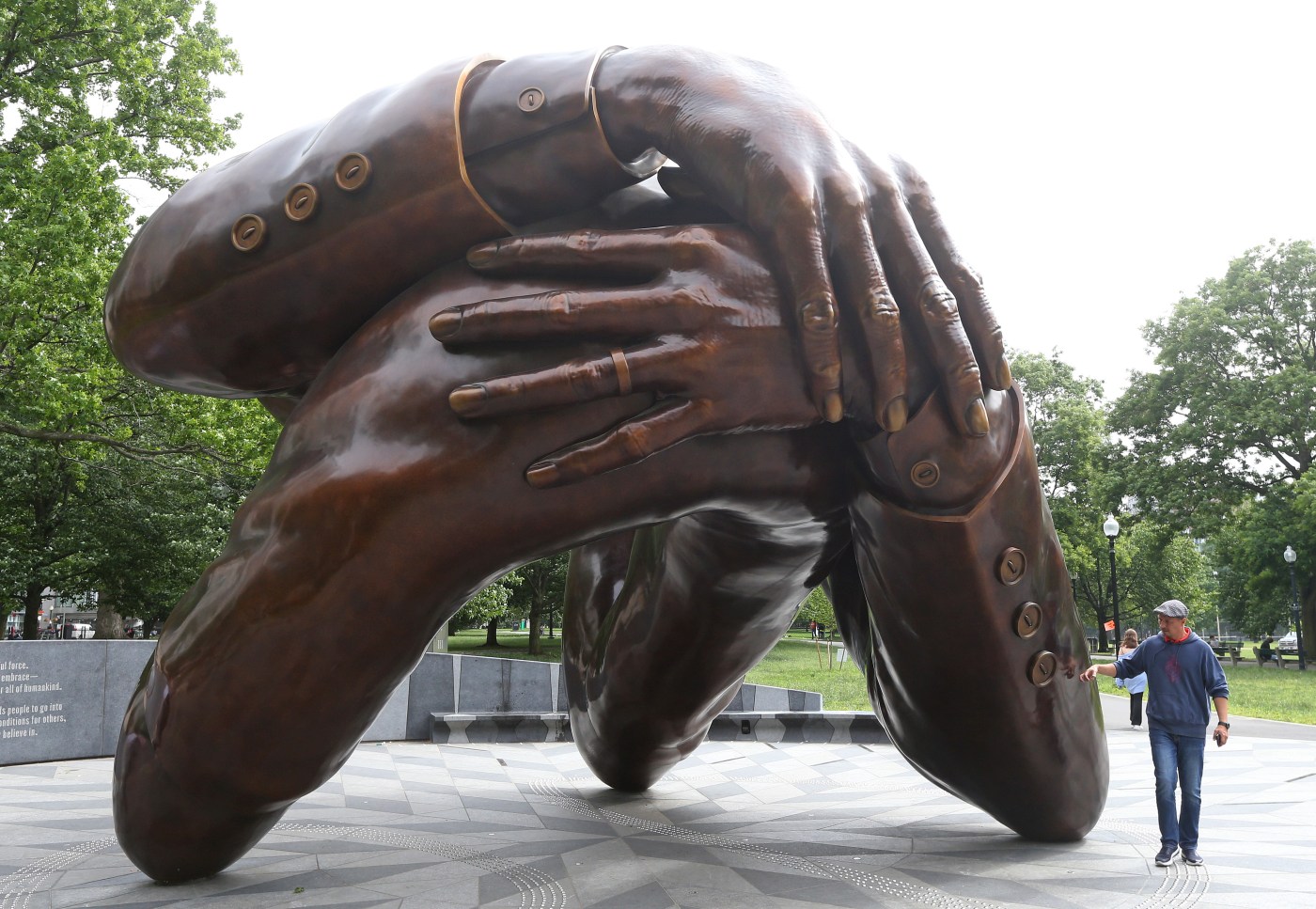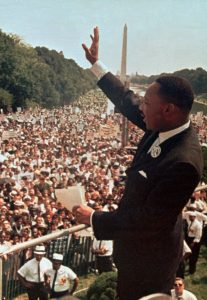
Gaskin: What I see when I look at ‘The Embrace’ statue
People refer to the 29 months in the 1990s when we went without a youth homicide in the city as the “Boston Miracle.” Rev. Ray Hammond said, “The miracle wasn’t that we reduced gang violence, but that we got all the groups to work together.”
That is what comes to mind when I see “The Embrace,” Boston’s memorial to Martin Luther King Jr. and Coretta Scott King on Boston Common. The city’s previous attempts to build a King memorial failed. But Black leadership — three Black executive directors — accomplished it with the help of various groups coming together. Similar to the efforts behind the Boston Miracle and “The Embrace,” imagine the problems we could solve if we came together citywide.
Raising $10 million for public art honoring Black people in Boston is amazing. Blacks and their allies from the public, private, nonprofit and philanthropic sectors coming together to support the various aspects of the project, e.g. the Ideas Festival, the King Center for Economic Justice, and the Embrace Center for Culture and Community is the miracle. With $31 million already committed to its construction, the National Embrace Center in Roxbury will occupy 31,000 square feet, feature a museum and policy center for research into racial inequities, and serve as a cultural hub for the Black community. When I look at these plans, I see something that could be a game-changer for Boston.
Given the city’s history on race, documented in Embrace Boston’s “Preamble to the State of Black Boston” and its Harm Report, it is remarkable that Embrace Boston, an organization led by a young Black man, at one point had $30 million in pledges. They now have more money than all the other civil rights groups in the city combined.
Embrace Boston’s mission is to build a radically more equitable city by dismantling structural racism through the arts, culture, community, research, and policy — Embrace Boston has the funding to do just that. In the last year, the organization has hosted conferences, produced research, launched a podcast, advocated for causes, and has an artist in residence, among other accomplishments.
Some see “The Embrace,” by artist Hank Willis Thomas and MASS Design Group, as a 22-foot-tall, 25-foot-wide, 38,000 lb. bronze sculpture. It served as a 3-D Rorschach test. Opinions may differ regarding the aesthetics of the memorial, but the focus should be on the results and the potential for change. Some say eyesight is good but insight is better. This is one of those occasions.
When I see “The Embrace,” I see new organizations such as the Black Economic Council of Massachusetts, The New Commonwealth Fund, the Boston Ujima Project, and Boston While Black all making an impact on the city and its future.
The last generation of Boston’s iconic Black leaders included change-makers such as Mel King, Chuck Turner, Melnea Cass, Sarah-Ann Shaw, and Elma Lewis, who are among the 69 individuals honored at the 1965 Freedom Plaza surrounding “The Embrace.” When I see “The Embrace” memorial, I see a new generation of Black leadership in Imari Paris Jeffries and hundreds of others. Each year, Boston magazine lists the 100 and now the 150 most influential people in the city. I could name 150 Black leaders alone. They represent a new generation and hope for the city of Boston.
A year after its installation, opinions about the aesthetics of the memorial have died down, and Embrace Boston has become an independent nonprofit addressing important social issues, such as disparities in education, housing, health care, criminal and environmental justice. Hopefully, “The Embrace” will inspire more of Boston’s Black leaders to take bold initiatives, with support from allies in the wider community. We are in a better position to make change. That’s what I see when I look at “The Embrace.”
Ed Gaskin is Executive Director of Greater Grove Hall Main Streets and founder of Sunday Celebrations.

